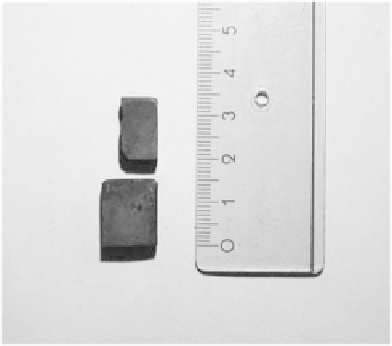Biomedical Engineering Reference
In-Depth Information
hydroxyapatite and obtaining a nanocomposite enhances these
parameters even further. The improved properties combined
with excellent biocompatibility of HA could help to obtain better
biomedical implants with better mechanical properties, corrosion
resistance and biocompatibility.
Obtained nickel-free austenitic stainless steels and their
nanocomposites with hydroxyapatite have superior cytocompatibility
to the conventional metallic biomaterial, 316L stainless steel.
Additionally, the nitrogen adsorption treatment increases corrosion
resistance with the existence of wear. The addition of nitrogen to a
stainless steel inluences the corrosion resistance of the steel.
Nanocrystalline nickel-free stainless steels can be used in variety
of applications where corrosion resistance and biocompatibility
have to be signiicantly higher than in case of conventional
microcrystalline materials. As shown in Fig. 6.10, using powder
metallurgy process (mechanical alloying), heat treatment, and
nitriding, bulk homogenous samples can be prepared. Thus
biomedical implants with better mechanical properties, corrosion
resistance, and biocompatibility could be obtained.
Figure 6.10
Bulk nanocrystalline nickel-free stainless steels samples.
References
1. Alvarez, K., Hyun, S., Tsuchiya, H., Fujimoto, S., and Nakajima, H. (2008).
Corrosion behaviour of lotus-type porous high nitrogen nickel-free
stainless steels,
Corr
.
Sci
.,
50
, pp. 183-193.

















